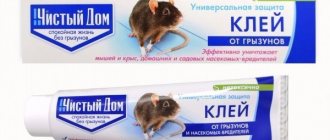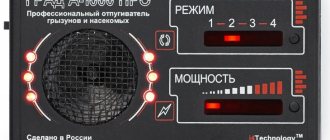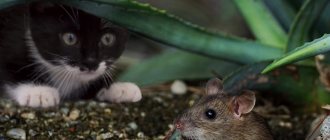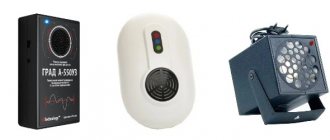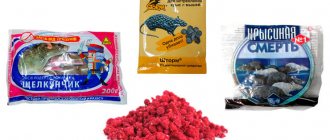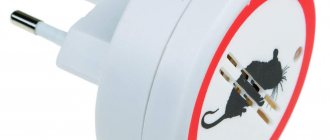Rodents are able to get into a house regardless of the material from which it is made. There are always gaps in the ceilings and walls of brick, concrete and wooden structures through which a mouse or larger rodent can get through.
The likelihood of pest invasion increases in the fall, when the summer heat gives way to cold weather. This forces rodents to look for a reliable shelter for the winter, which will be warm and satisfying. To prevent the appearance of mice and rats in the house, you can use special nets. Such a barrier can make rodents think about finding another home.
- 5.1 Protecting the house during construction
Weaknesses in frame buildings
With the onset of cold weather, mice move closer to people in search of warmth and food. And frame houses become housing for small pests not only for the winter.
With the onset of spring, they will definitely not leave the house due to constant access to food, in addition, they will begin to actively reproduce.
When building a frame house, it is impossible to avoid gaps at the joints; technological gaps are necessary for ventilation. The floor is usually installed on joists, between which roll or tile thermal insulation is laid.
It is also mounted inside the walls. Pests can chew through inexpensive materials, such as polystyrene foam, and build entire labyrinths of passages. As a result, the thermal insulation layer becomes unusable.
Rodents enter the house through cracks in the foundation, floor and basement. This area should be protected during the construction phase.
Used insulation materials
How to get rid of rats: 5 best and proven methods.
What is more effective: repelling rats or killing them? External insulation is recognized as the most rational and effective option for insulating a timber house. This not only protects the walls from freezing, but also protects the wood from weathering. Insulation can be carried out using various methods using the following thermal insulation materials.
Mineral wool
In addition to thermal insulation, mineral wool has good sound insulation properties. In addition, it does not burn and is environmentally friendly
What is especially important for wood is that mineral wool is vapor-permeable, which allows the wood to maintain optimal humidity, that is, to “breathe”
The disadvantages of this heat insulator include hygroscopicity - the ability to absorb water, therefore during installation the material is protected with a special membrane that allows air to pass through, but does not allow moisture to pass through.
Pressed mineral wool mats are most convenient to install.
Polystyrene foam and extruded polystyrene foam
Polystyrene-based insulation materials have high thermal insulation characteristics, they do not absorb moisture, are not subject to rotting, can be quickly and easily installed on any surface, and with appropriate processing (during the production process), do not support combustion.
The main disadvantage of such materials when insulating wooden houses is their complete impermeability, which does not allow excess moisture to be removed from the wood. This leads to the formation of mold and black spots, and rapid rotting of the wood. Therefore, polystyrene foam boards are practically not used for insulating the walls of wooden buildings.
Spray polyurethane foam
Light and airy polyurethane, which is applied to the surface by spraying. It adheres perfectly to any surface, forms a seamless layer with high thermal insulation characteristics. Cured polyurethane foam does not absorb moisture and is not subject to rotting or any type of biological damage. To protect against ultraviolet radiation, the material is covered with siding or a curtain wall.
The disadvantage of this method is the high cost of the work.
Ecowool
Another option for sprayed thermal insulation material is ecowool, which is a mixture of fluffed cellulose, antiseptic additives, boric acid and some other components and additives. Ecowool is considered an environmentally friendly material; it can be applied to both vertical and horizontal surfaces, and also blown into cracks to fill voids.
The disadvantages of ecowool include its tendency to shrink, which over time leads to the appearance of cracks and voids.
Foamed (foil) polyethylene
Penofol and other brands of this thin roll insulation when insulating houses made of timber can be used as a wind barrier or vapor barrier to protect the main insulation, for example, mineral wool, from moisture. To ensure complete tightness of the layer, the joints of the strips are taped.
Bulk insulation materials
Bulk insulation materials such as sawdust, a mixture of sawdust and clay, expanded clay, and expanded polystyrene balls are used to insulate floors, interfloor and attic floors when carrying out complex thermal insulation of buildings and housing.
Interventional insulation
When constructing a log house, tape inter-crown insulation based on flax, jute or a mixture of these materials is used to seal the seams. After shrinking the log house, it is recommended to caulk the seams using tow made from flax fibers.
When comprehensively insulating a house, several types of heat insulators are most often used. For example, for wall insulation - mineral wool, for floors - expanded clay, attic floors - sawdust with clay, roofs - polyurethane foam or extruded polystyrene foam. Other combinations of thermal insulation materials are also possible.
Choosing a rodent mesh: mesh size
Reinforcing mesh is used to protect against rodents. Plastic will not work because mice can easily chew through it.
A galvanized metal mesh with a cross-section of at least 2 mm and a cell size of no more than 6 mm is required.
Only in this case will reliable protection against rodents be ensured. The galvanized coating will protect against corrosion, and mice will definitely not chew through the thick two-millimeter metal.
The use of fine mesh is due to the fact that the skull of rodents can shrink. If the mesh is larger, the pest will be able to enter the house.
Another equally effective type of mesh is TsPVS. TsPVS stands for all-metal expanded metal mesh.
It is made from a metal sheet 1 mm thick by cutting through cells, after which it is stretched.
Both types of mesh are fastened with construction staples or self-tapping screws in combination with press washers. It is mounted to thermal insulation materials using special clamps.
Advantages, comparison with non-galvanized and PVC
The industry offers welded mesh with different types of surface: non-galvanized, galvanized and PVC coated. When choosing the optimal solution, you should know the advantages and features of each variety. The positive and individual characteristics of galvanized welded mesh are discussed above.
Non-galvanized mesh
Non-galvanized welded mesh has no coating and is not weather resistant and therefore will not last very long. But the materials have an important advantage - low cost. Therefore, it is only suitable for solving temporary problems or when implementing projects where the type of materials is not so important. For example, the construction of fences at a construction site, fences on private property (when performing repair work), it is also possible to build solid structures, but they will have to be painted periodically.
Galvanized welded mesh with PVC coating
Welded mesh coated with PVC has the best performance characteristics. A layer of polyvinyl chloride is applied to a sheet of low-carbon or galvanized wire. The polymer coating provides resistance not only to weather influences, but also to the influence of alkalis and acids. In addition, the products have an attractive design; at the client’s request, the surface can be given any color; the standard solution is green. Thus, the mesh combines beauty and durability. The disadvantage is the higher (compared to other varieties) price. Welded mesh in PVC is the optimal solution for the construction of fences in the coastal zone.
Installation of rodent mesh in a frame house
The mesh is used to cover the basement of the house. Additionally, it strengthens all corners (floor and ceiling) and joints. These are the most vulnerable places.
To protect the frame house when installing the mesh, follow the rules below:
- Along the entire perimeter of the foundation, the stack is buried to a depth of at least 0.8 meters;
- The protection is laid on the subfloor under a layer of insulation;
- Before applying the finishing layer, all external corners are strengthened;
- All technological openings (ventilation, chimneys, vents in the foundation) must also be protected.
If you follow these rules, rodents will have virtually no opportunity to get into your home.
Mice mesh in a frame house installation
Mousetraps
This method of eliminating rodents has been known for centuries. A mousetrap is a simple device that is triggered when an animal pulls the bait. Mice are not selective in their food, and cracklings or a piece of raw or fried lard, cut off with the skin, are the best bait. Mousetraps are placed on a flat, hard surface in places where pests most frequently appear. If you choose the right bait, you can quite effectively eliminate all the mice living in the house. In addition, the method is quite environmentally friendly and cannot harm humans.
You can make traps for rodents yourself. So, glass bottles, for example, beer bottles, are used for this purpose. You need to pour a little aromatic unrefined sunflower oil into the bottle, and place the bottle itself at an angle of about forty degrees, securing it with a rope. As practice shows, mice often fall into such a trap and up to five animals can end up in a bottle overnight.
Another trap option is using a bucket and two planks. Fill a regular bucket with water up to halfway. A board is placed on the bucket, along which the mouse can climb up. Two more strips are installed on top, one is placed on the bucket itself, and the second is crosswise with the first; it should be somewhat shorter. You need to place the bait on the edge of the short bar. The meaning of this design is that when the mouse approaches the treat, the bar tilts under its weight and the animal falls into the bucket. Then the bar returns to its original position. This method is quite effective, but is intended for enthusiasts, since it is necessary to carefully select the length of the short board and make sure that it returns to its place.
Combination of mesh and other protection methods
To increase efficiency, it is worth using additional methods that are usually still used during the construction phase:
- Reinforced concrete slabs. A foundation made of reinforced concrete slabs will become an insurmountable barrier for rodents.
- Expanded clay. The subfloor is covered with a thickness of 0.25-0.45 m of expanded clay, and it is filled with cement mortar on top. After complete hardening, a waterproofing film is laid. At the end, a screed is installed or chipboards are laid.
- “Correct” insulation. It is worth using mineral or ecowool as a layer of insulation. These materials are inedible for rodents.
The combination of all these measures will reliably protect your home from rodents.
Production features: made of galvanized and low carbon steel wire
Welded galvanized sheet can be obtained in two ways.
Galvanized wire is positioned perpendicular to each other and welding is carried out. This technology does not provide the highest level of corrosion resistance, since the welding joints are not further processed and there is a (albeit small) likelihood of corrosion. But there is also a positive aspect - in the manufacture of canvases, less zinc is consumed, which allows saving on production.
Low carbon wires are placed perpendicular to each other and spot welded. The finished fabric is galvanized, the welding joints are “fixed” with a coating, which prevents corrosion.
Galvanizing is performed in two ways. The first of them is hot-dip galvanizing, the process of which includes several stages: the material is cleaned, degreased, pickled, washed, dried and then passed through molten zinc. The coating is applied on a special processing line. The disadvantages of the technology are the high cost and unevenness of the resulting zinc layer.
Coating using galvanization technology allows you to obtain a monolithic and uniform, but thin coating. An important advantage of the technology is the complete absence of the risk of coating peeling. This efficient and inexpensive method is most popular when working with meshes.
Cat
You can add their ancient enemy – the cat – to the collection of proven methods in the fight against rodents. If the residents of the house are not allergic to these pets, then bringing a cat into the house will help solve the problem with annoying rodents. In some cases, the cat won't even have to catch mice. Rodents perfectly recognize the smell of their enemy and will probably prefer to retreat as quickly as possible.
Important. Sometimes the smell of a cat alone is not enough to drive mice away from the house, so the cat will still have to deign to go hunting. However, decorative purebred cats are not always able to hunt mice, so if your house is filled with mice, then it is best to get an ordinary purebred cat.
What methods of rodent control exist?
- Rodents in a frame building can be controlled using ecowool in the floors of the lower floor. Ecowool, consisting of 80% cellulose of wood origin and 20% borax, serves as an antiseptic for wood and prevents rodents.
- Some builders, in order to protect premises from mice and rats, spray the blocks with a solution of borax and lime.
- One of the old “old-fashioned” ways of fighting rodents in a building is to add slag, ash, tobacco dust, pine branches, dry burdock, mint, wormwood, etc. to the insulation.
- In some homes, to protect against rodents, metal mesh is used, which is placed in places where rats and mice can enter. You can lay a grid, for example, in a floor structure. A monolithic reinforced concrete slab as the foundation of a home will also protect against this problem.
Metal mesh against rodents and other methods of protection
It is clear that sooner or later rodents will appear in frame houses. And the issue of protection from the activities of such mammals immediately becomes relevant.
If you are just planning to build a house and want to protect your building from rodents (rats, mice, etc.), then we recommend that you wrap your building with a metal mesh with 5x5 mm cells.
It is worth noting that there are often cases when rodents bite through galvanized mesh with a wire thickness of 1.5 mm.
What to do in this case, you ask? There are 2 options to solve this problem.
1) Use the “correct” insulation. It is not recommended to insulate houses with polystyrene foam. This is the worst choice you can make. If rodents want to get into your home, they can easily chew through the polystyrene foam in one week.
Many people choose this material because it is relatively inexpensive. But it is best used together with mineral wool. However, it has been noticed that even basalt fibers do not stop rodents from thriving.
Some experts recommend using ecowool to protect a frame house from rodents and at the same time insulate it. And although this is far from the cheapest insulation, it will easily fill even the smallest cracks. It also has good adhesion and low air tightness. Those who use this insulation do not suffer as much from unwanted rodents.
It is worth noting that when producing ecowool, it contains phenol-formaldehyde resins that are harmless to health. Also, this insulation does not emit any dust, which would contribute to the occurrence of respiratory diseases.
If you know and hear that you have mice or rats under the floor. Then you should do the following:
2) Apply “ expanded clay lock”
" If you burn low-melting clay, you will get expanded clay.
Try this:
A 30-centimeter layer of expanded clay is placed on the ground. Then it is covered with plastic film on top and two layers of OSB-3 are added. Then the laminate is laid on these layers. Although this is a rather labor-intensive process, it is very effective against rodents. Do not forget to supplement this layer with a 10-centimeter layer of expanded clay, which should lie between the main and subfloor.
As an option, you can try covering all the corners of the frame house on the outside with a metal mesh with small cells. The height of this mesh must be at least 1 meter.
As a last resort, you can use a profiled sheet made of structural steel, up to 1.5 mm thick.
One of the most common methods of low-rise housing construction in developed countries of Europe and America is frame technology. The use of energy-efficient, lightweight, safe and durable materials allows you to build a cozy and practical frame-panel mansion in the shortest possible time, regardless of the time of year. The frame house, convenient and original in configuration, could be called perfect in all respects, if not for one nuance - mice in a frame house.
Closely located trash cans can attract pests to a frame house. To protect your household from rodents, it is necessary to set aside an area for various household waste away from the cottage.
